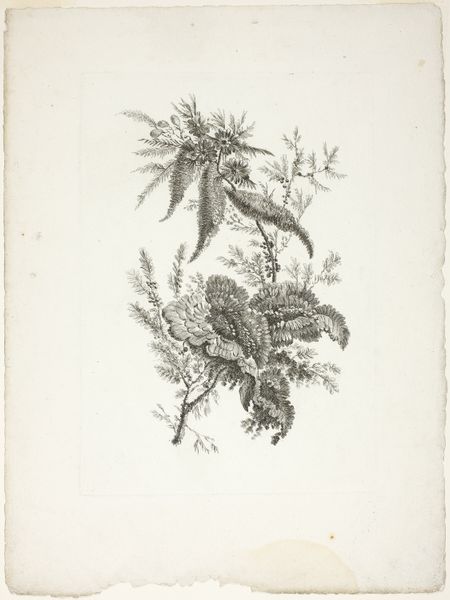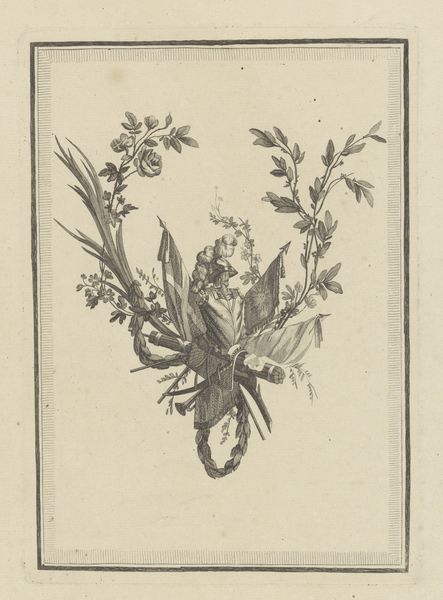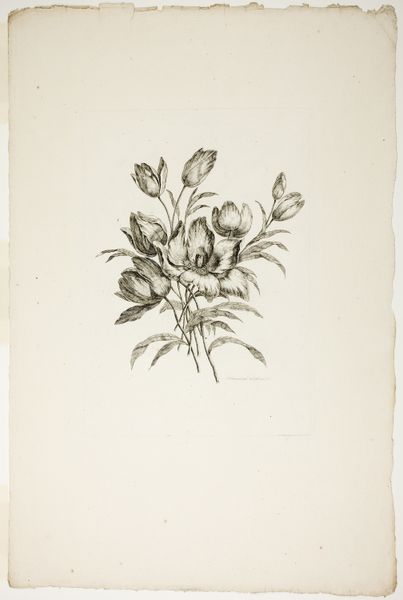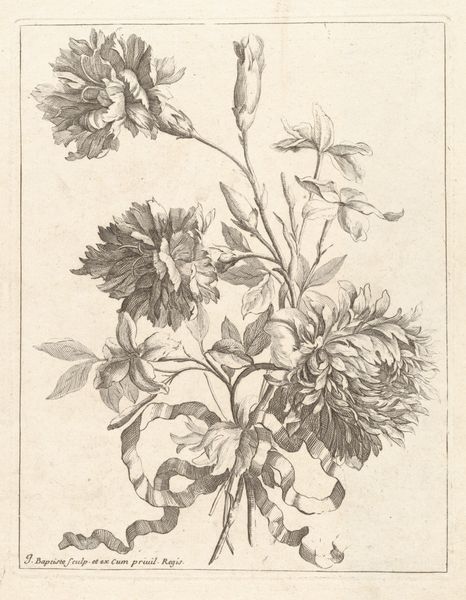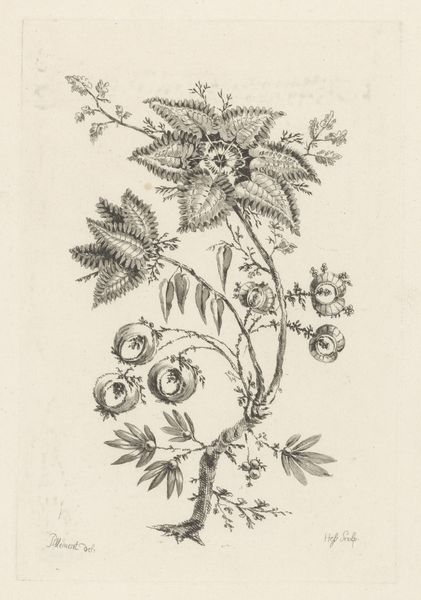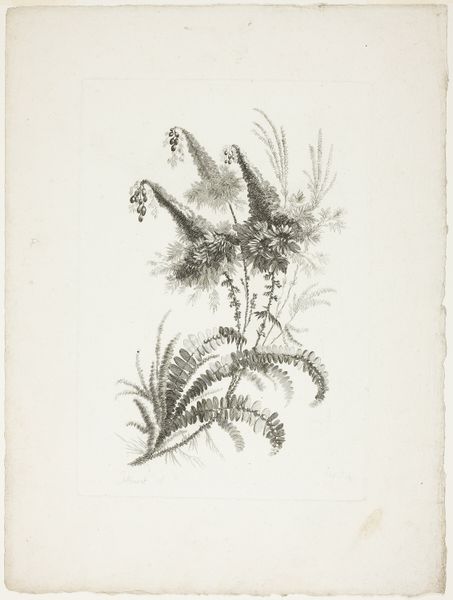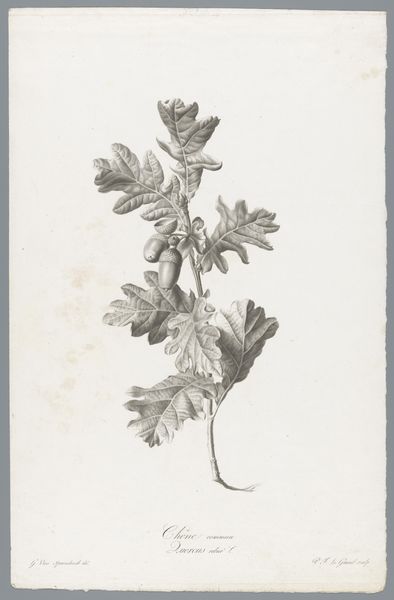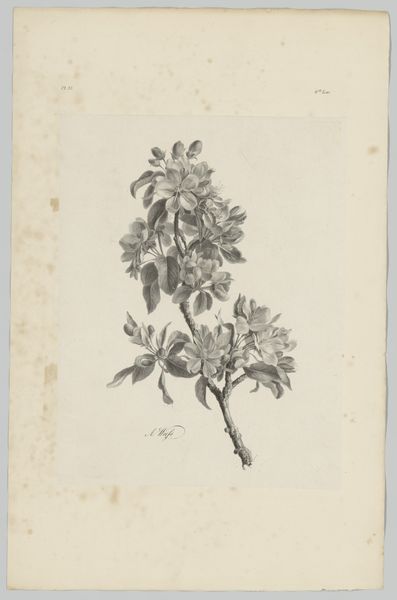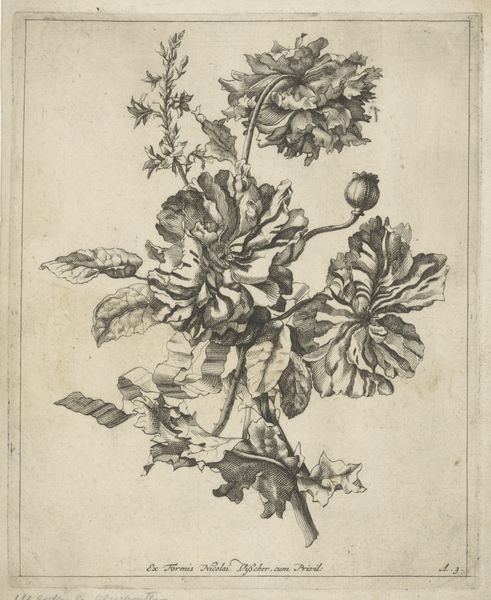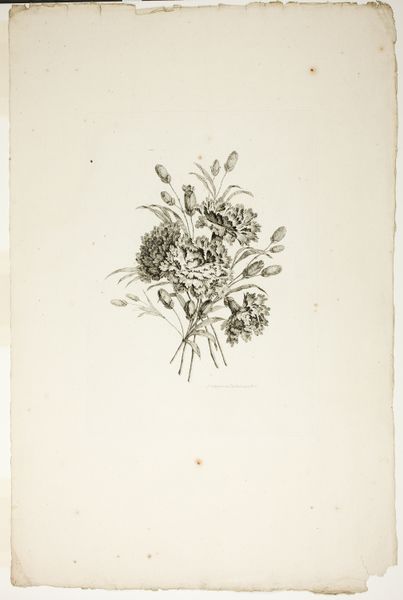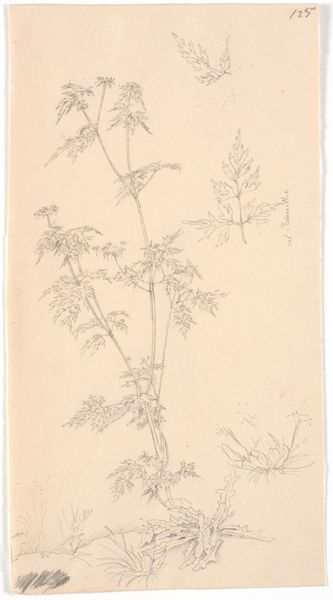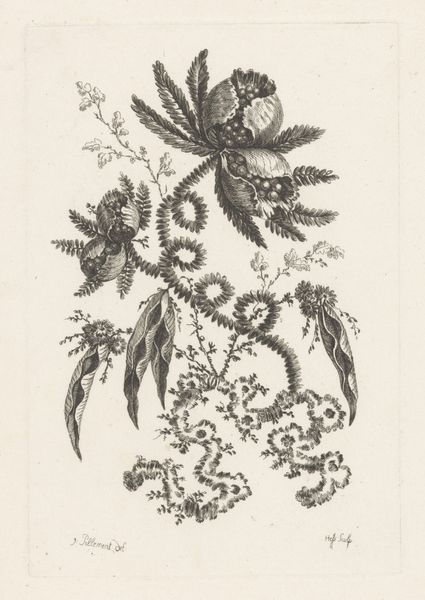
Bouquet, from Collection of New Flowers of Taste for the Manufacture of Persian Cloth, Invented and Drawn by Jean Pillement 1765 - 1770
0:00
0:00
Dimensions: 250 × 172 mm (plate); 351 × 263 mm (sheet)
Copyright: Public Domain
Curator: Welcome! We are standing before "Bouquet, from Collection of New Flowers of Taste for the Manufacture of Persian Cloth, Invented and Drawn by Jean Pillement," created between 1765 and 1770. This etching, rendered in ink on paper, is part of The Art Institute of Chicago's collection. What are your first thoughts? Editor: It feels like a botanical study, very precise and delicate, but also quite haunting in its monochrome rendering. The detail is impressive. Curator: Indeed. Pillement's original drawings were intended for textile design. Imagine artisans carefully translating these delicate lines into woven patterns for luxurious Persian cloths. It collapses the distinction between "fine art" and craft. Editor: I'm struck by the symbolic choices here. Why these particular plants? The spiky, almost starburst-like forms at the top juxtapose interestingly with the softer, more fruit-laden branch below. The berries have a visual richness. Curator: Pillement, though French, catered to the European fascination with the "Orient" during the Baroque period. His stylized renderings became models for exotic designs on tapestries, wallpapers and porcelains. The "exoticism" here is constructed through line and form. Editor: And constructed for a market hungry for novelty. Each detail, each flourish, signals something luxurious and other. I wonder about the accessibility of the designs; it was very likely viewed by designers and artisans involved in production, offering the possibility of visual pleasure linked directly to labour. Curator: Exactly. There's also the impact of printmaking itself. Etchings like this could be disseminated widely, influencing visual culture far beyond the elite circles. What's fascinating to me is the democratization of ornamental designs. Editor: Thinking about cultural memory, these plant motifs would resonate with viewers familiar with symbolic meanings assigned to various flora, now filtered through Pillement's imagination and transformed into purely decorative forms divorced from the reality of labour conditions and cultural context. It speaks of a culture obsessed with appearances and ornamentation. Curator: Ultimately, Pillement's work, a combination of botanical study and imagination intended as designs for textiles and accessible via prints, speaks volumes about art's relationship to labor and the construction of luxury. Editor: Yes, and by considering the symbols, techniques and the social context we may be able to discover cultural values that may be overlooked when appreciating what seems to be just an ornamental artform.
Comments
No comments
Be the first to comment and join the conversation on the ultimate creative platform.
